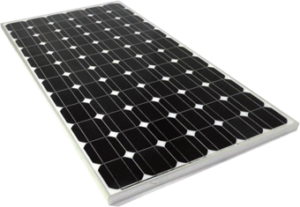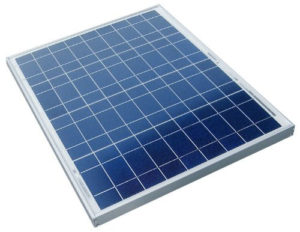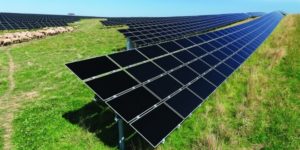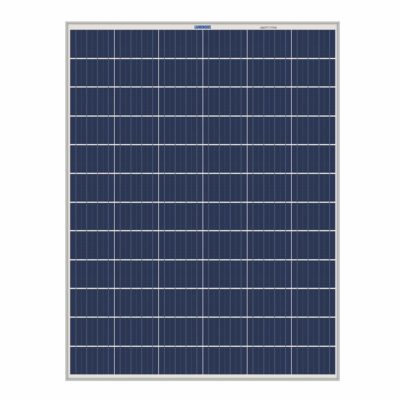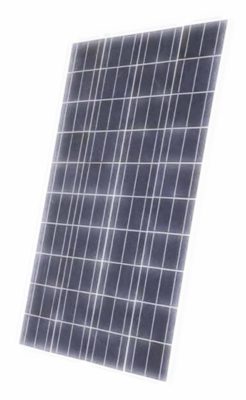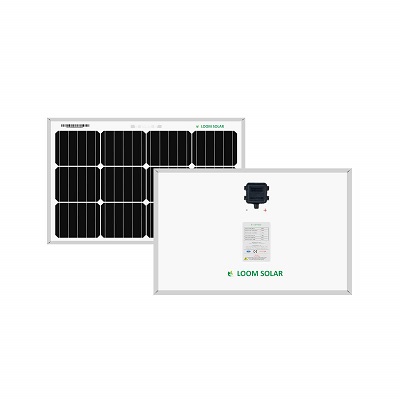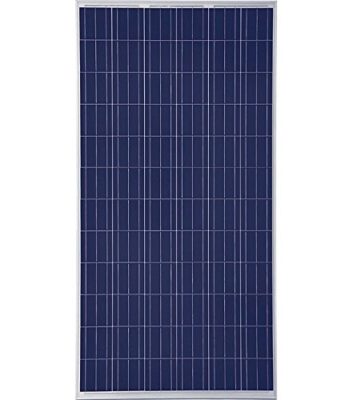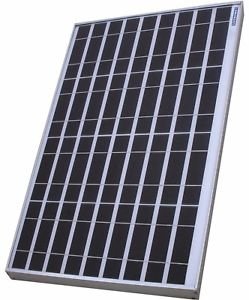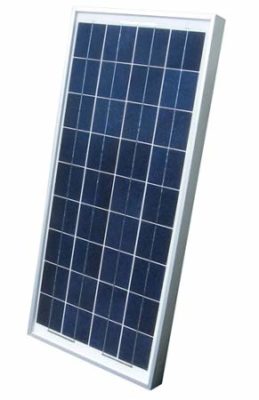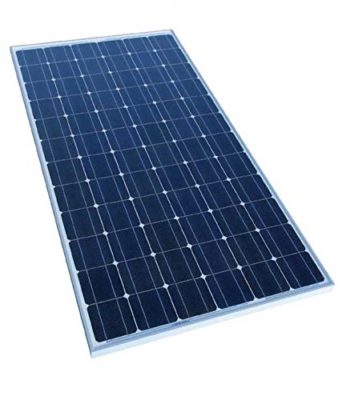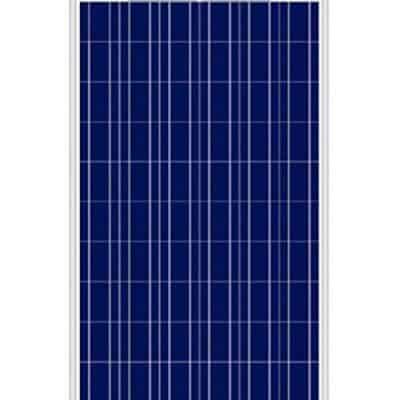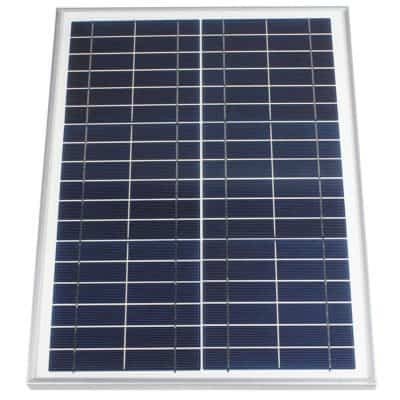9 Best Solar Panels
India being a sub-tropical country, most of the country has about 300 clear, sunny days, meaning that India is blessed with an abundance of solar energy. It is calculated that India receives about 5,000 trillion kilowatt-hours (kWh) of energy in the form of solar radiation every year.
Tapping into this energy could be a solution to the growing green-energy crisis. Using solar energy to power the entire house itself is something that is relatively new to this country.
If you are looking to tap into this plenteous energy, we have got some vital information for you, which will help you in exploiting this inexhaustible energy to the fullest. The first and foremost thing that you will need is solar panels.
Before getting into that, it is worth knowing the various types of solar panels available, how they work, and what are there pros and cons, to help make a better decision before investing in the solar panels you want.
Don’t worry; we won’t get into a lot of the technicalities and will explain them without much of jargon.
The article will circle benefits of installing solar panels. components used and how its works?. types of solar panels, buying guides, FAQs, and Best solar panels in India.
Best Solar Panels in India
| Product (Best Brands) | Best Price |
|---|---|
Benefits of installing solar panels
- By installing a solar panels system, you will never face any issue of power cuts.
- It is a one-time investment
- The solar panel requires very minimal maintenance, and it provides you continuous supply of electricity
- The primary material is sunlight, which is available for free and is in abundance. It is one of the open natural sources for producing electricity.
- It also helps in reducing consumption and managing your electricity bills.
- You will also get a subsidy from the Indian government.
- The house will get a continuous supply of electricity. The electricity generated by the battery is stored and connected to a home inverter.
- Therefore, dependency on primary grade for electric supply reduces drastically.
Components used in solar panels and how do a solar panel works?
Solar panels are made up of solar cells. The solar cells alone cannot generate electricity as it requires different processes such as laminating, cutting, fixing, junction boxes, testing, etc.
The solar panel consists of the following.
Frame – It is for the outer protective layer.
Glass – It protects the solar cells from damage due to rain or
Encapsulant – It acts as adhesion between solar cells and the top and bottom surface of the solar panel. It has a low thermal resistance and is transparent. It should be stable during high UV exposure and temperature
Solar cells – The absorption of sunlight and conversion of energy into electricity happens in solar cells.
Back sheet – Backsheet provides support to the entire solar panel
Junction box – It has wires that transport energy from individual solar cells to the power conditioning unit
How do solar panels work
Solar panels absorb sunlight. Sun’s high intensity means more electron contributes to the flow of current
Solar panels convert solar energy into electric energy and its stores in a battery bank which can be used later
Types of the solar system
Off-grid solar system
In this type of solar panel, the solar system is not connected to the primary grade. The solar system consists of solar panels inverter, mounting structures, power backup, and Central AC panel
They work independently of the network, and it enables the storage of energy in battery banks, which can be used to supply electricity to households using a domestic inverter.
This type of solar system is excellent for areas with acute power cuts, where the main electrical power supply is unreliable.
On-grid solar system
The on-grid solar system does not need to store electricity; it works along with the primary grade. It is most suitable for a place where electricity consumption is high. By using a solar system for electricity needs, it reduces the total consumption of primary grid and helps save in utility bills.
Hybrid solar system
The hybrid solar system is a combination of an on-grid and off-grid solar system. It uses battery banks in inverters like an off-grid system and connects to the on-grid as well
It ensures uninterrupted power supply even during night time.
This system does not require electricity from the primary grid during the day as solar energy takes care of your needs, and during the night, the energy stored in batteries takes over.
However, you will need a net metering system which lets you save the most amount of power and money as well
Types of Solar Panels
There are a variety of solar panels available in the market, each with different power ratings, efficiencies, and other related information (which could seem like Greek and Latin), which could make buying or choosing the kind of solar panel seem like a formidable task.
There are three types of solar cells or solar panels.
- Mono-crystalline silicon solar panels
- Poly-crystalline silicon solar panels and
- Thin-film solar panels.
Mono-crystalline Silicon Solar Panels
Mono-crystalline Silicon solar panels, as the name suggests, is made out of a single piece of a silicon ingot. Silicon ingots are high purity silicon melted and crystallized into the shape of a cylinder.
The higher grade of silicon used in this type of solar panels makes them the most efficient of the three types of solar panels that are available. They have an efficiency ranging between 15%-20%.
They have the longest life among the three types of solar panels, and most manufacturers put a 25-year warranty on mono-crystalline silicon solar panels.
Their higher efficiency means that they can produce more power while taking up less space, as compared to the other two.
But all these benefits come at a price, quite literally. Mono-crystalline solar panels, through the most efficient, are also the costliest of the lot. In some cases, the extra buck may not be worth the added power generated by them.
Moreover, the entire circuit can break down if it is covered by shade, dirt, or snow. This calls for added equipment like micro-inverters, which results in more added costs. This may not necessarily be what you need at home or with a limited budget. But they are more aesthetically pleasing, which can add color to your house.
Polycrystalline Silicon Solar Panels
Unlike mono-crystalline Silicon solar panels, polycrystalline solar panels are made of wafers of silicon put together.
Silicon is melt and poured into square molds. Wafers are then cut out from the square silicon molds and put together.
This type of solar panel uses silicon of lower grade, and the level of purity of the silicon is lower in them, which gives them a bluish color with a tinge of white in them.
Solar panels of this type have efficiencies ranging between 13%-16%. But on the brighter side, they are considerably cheaper than the mono-crystalline silicon solar panels.
Considering that their efficiency is just a bit lower than the mono-crystalline ones and that they are cheaper as well, it might better to invest in poly-crystalline silicon solar panels in some cases.
Thin-Film Solar Cells
Thin-film solar cells are second-generation solar panels, which are made by depositing either one layer or several layers of photovoltaic material on a substrate.
Photovoltaic materials are materials that are capable of producing electricity when exposed to sunlight. Various photovoltaic materials are used in thin-film solar panels, and each of them has different working technology. Depending on the technology, thin-film solar modules have efficiencies between 7%-13%.
They are the only type of solar panels that can be made flexible. They are more resistant to high temperatures, and the effect of shading is very little on its performance.
They have a pleasing look and will give your house a dramatic facelift, but thin-film solar panels are not very effective in residential applications. They also degrade faster and hence have a shorter life compared to mono- and poly-crystalline silicon solar panels.
Buyer’s Guide
Just knowing about the types of solar panels might still not help you make the best decision. So, we have put together a list of criteria that you should consider while purchasing solar cells.
Panel Quality
It is the key factor to be considered while buying a solar panel. One must need to check the quality of the panel. It is a simple task to do. One must need to check for ISO certifications/specifications.
However, the solar panel manufacturer receives the ISO 9000 series certification if the panel meets all the necessary specifications.
Durability
It helps to know how long can a panel work by withstanding the weather conditions. IEC certifies after the reliable tests. The tests help to know the panel performance in snow wind, high wind, and other conditions. The panels which comply IEC standards are more durable.
Cost per watt
Many people look for the price while buying a panel. We have large solar panels and also small solar panels. To get the true price of the panel, you divide the panel price by the number of watts it outputs. The final number you receive is the price of the panel, and now you can compare all the panels within the range before buying.
Solar Panel Ratings
Each solar panel has a power rating, which shows the measure of energy it can create under particular modern standard test conditions.
Though a solar panel would practically experience such conditions for a very small period of time, power ratings are a useful parameter to compare solar cells.
A solar panel with a higher power rating would mean that it can produce more power under similar conditions than a solar panel with a lower power rating.
But this does not give you the entire picture. Solar panels with greater power ratings do not necessarily imply greater efficiency or superior technology.
If two solar panels have the same efficiency ratings, but if one of them has a greater power rating than the other, then it is very much likely that the one with the greater power rating is bigger compared to the other one. Therefore, it is essential to consider other parameters, as well.
Power Tolerance
Power tolerance is the range of power that a solar panel will produce above or below its power rating at any given time.
Power tolerance tells you the range of power that a solar cell will produce under real-time conditions.
If a solar panel has a power rating of 220W with a power tolerance of ±10%, this means that the panel will produce anywhere between 198W and 242W at any given time.
A solar panel with a small range of power tolerance is recommended as it represents more certainty in power produced by the solar cell.
There are solar cells these days that come with a 0% negative power tolerance. Such panels, for example, having a power tolerance of -0%,+10%, and a power rating of 220W would produce anywhere between 220W and 242W at any given time.
Such panels are more beneficial, as they can produce more power at all times. They are also known as positive power tolerance panels.
Solar Cell Efficiency
Solar cell efficiency is a measure of how effectively the solar panel converts solar radiation into electricity. Most solar panels, these days, have an efficiency of just above 20%.
A higher solar panel efficiency rating implies that the solar panel can produce more electricity for a given amount of solar radiation on the solar panel.
This is probably the most important factor that you have to consider while purchasing or choosing solar panels. For two solar panels of the same size, the one with the higher efficiency will produce more electricity.
The only way to get more electricity from a solar panel having the highest efficiency possible is by increasing its size. And that’s what makes this the most important factor to consider as the right set of solar panels will enable you to produce the maximum amount of energy while taking up as less space as possible.
Temperature Coefficient
Though the solar panel is supposed to be able to produce more energy when exposed to more sunlight, on the contrary, the more sunshine that you get, the hotter the solar cells will get, and that, in turn, will reduce the amount of energy produced.
Solar panels are all rated at 25 degrees Celsius, above which the amount of electricity produced by them tends to go down.
The temperature coefficient is a parameter that will give you the amount of decrease in power produced for each degree Celsius rise in the temperature of the solar cell.
For example, if a solar cell rated at 250W has a temperature coefficient of -0.5% per degree Celsius and the temperature of the solar cell is 50 degrees Celsius. Then, the power loss is a little more than 31W, which means that the solar cell will be able to produce slightly less than 220W of power at 50 degrees Celsius.
The method to find out the power loss involves a little bit of calculation and can be done as follows.
Temperature increase of solar cell= 50 degree Celsius – 25 degree celcius= 25 degree Celsius
Total percentage drop in power produced= 0.5 x 25=12.5%
Power loss= 12.5% x 250=31.25 W
Therefore, the panel power is 250-31.25=218.75W
Manufacturer Assurances
Manufacturer assurances are the warranties that a manufacturer gives while purchasing solar panels. This would have been quite straightforward for other products, but when it comes to solar panels, it is a bit tricky.
The power produced by any solar cell decreases year after year, the biggest decrease coming after the first year. This decrease in power production is called panel degradation.
Most manufacturers provide a power production warranty guaranteeing that their panels will retain a certain percentage of their power-producing capacity within the next 25 years, usually it is 80%. The key looks for solar cells, which will retain a higher percentage of its power-producing capacity.
The decrease in power output in a solar cell over a year is called the degradation rate. Some manufacturers also provide a guarantee for the degradation rate, usually about a 0.7% drop in power production over a year. Here, a smaller percentage is better.
A third warranty is provided for solar panels which cover the materials. The materials warranty acts as a guarantee against failure due to manufacturing defects, environmental issues, and durability. Most manufacturers provide a warranty of 10-12 years for their solar panels.
Certifications
The ministry of New and renewable energy have mandated certificates for solar panels
IEC 61215/ IS 14286 is a mandatory certificate for crystalline silicon terrestrial models
IEC 61646 is mandatory for thin-film terrestrial models
The solar panel must have IEC 61730 part 1 requirement for construction and part 2 requirement for testing and safety qualification.
If you are installing solar panels in coastal regions where the atmosphere is highly corrosive, the solar panel must be tested as per IEC 61701 for IS 61701 for salt mist corrosion.
Solar panels are pricey, so you should demand test certificates and check their validity as it is always better to take precautions instead of regretting the purchase later on.
Warranty
Manufacture of attractive warranties and guarantee is based on the durability of solar panels. There are many difficulties while manufacturing solar panels like declining prices and changes in government regulations, etc.
The small manufacturers may find it challenging to sustain in the industry; hence, they offer less warranty period. It is advisable to go for idle brands that offer high-efficiency, durability, and warranty.
Brands like luminous offer a ten-year product warranty along with 25 years of performance warranty.
1. Luminous 325Watts Solar Panels Poly Crystalline
Luminous power technologies are one of the leading and trustworthy brands of India that come with a variety of products within an affordable price range. Starting with battery, inverter, fans, lighting to solar panel Lumnous manufactures all of it.
This solar panel from Luminous is a mid-range product that has lots of features and capabilities. The build quality of the panels, the design, and the placement position, everything is well organized and properly thought. Let’s talk about the product to know more in detail.
- This Luminous solar panels can also be connected to your home inverter to produce electricity so that you can use it in your residence and office areas.
- The output of these solar panels is 325 watts; this means a decent amount of electric gadgets can be operated using this power supply system i.e., a fan, two lights, and one television as well for as long as it provides you with electricity supply.
- The space that is required for these solar panels is only 20sq. Feet on the roof, and make sure to place them on a place where they can get direct sunlight to recharge themselves.
- Two batteries of 12 volts can be added to these solar panels in the long run.
- The EVA (ethyl vinyl acetate) will provide better protection to the modules of these panels.
- The charging time of these solar panels is pretty quick. The direct sunlight from 11 am to 3 pm can get the panels fully charged and is ready to provide you with decent services.
- These ultra-durable solar panels from Luminous is made of Poly Crystalline material that is very lightweight and is an advanced technology to last longer than any other panels in the market available right now.
- Luminous believes excellent product-quality, and this is why they are providing these panels with 25 years of performance warranty.
- This panel comes with anti-reflective coating so that it can absorb more light to recharge properly.
- The safety of these panels is the top priority. PID (Potential-induced degradation) technology will keep the panels safe against power loss due to bad weather conditions or lightning as well.
- It will provide you with excellent performance even if the weather is cloudy or in the evening time.
- There were no negative points found.
2. Microtek Solar Panel MTK
Microtek is one of the leading companies in the world that manufactures power products such as inverter batteries, UPS, and solar panels as well.
Microtek has always been known for its top-quality products, and these pocket-friendly solar panels are no exception either. They are durable, long-lasting, and comes with many features.
- This Microtek solar panel is a 150-watt powered panel that will allow you to use a decent number of electrical appliances for a limited time too.
- This high-efficiency solar panels observe the sunlight and create power in the peak hour to provide you with its services later.
- The cost of this product is very affordable when compared to performance.
- These solar panels from Microtke are weatherproof. This means even if there is any storm, rain, or even snowstorm, they won’t stop working and also be in the top-class condition as if nothing happened. It has been tested in more than 20 houses.
- The panels are made with heavy-duty aluminum frames that are heat resistant as well as have cleared the freeze test too.
- This aluminum alloy junction box is corrosion-resistant, which is why even in rainy seasons when it is openly placed on the roof, it does not affect the performance or does not get covered with rust. It is IP65 certified all-weather resistant.
- In the peak hours, they charge themselves, and this process completes very quickly.
- These Microtek solar panels are giving you the trust of 25 years with a warranty; in any case of dispute, it will be repaired.
- 3.2mm EVA (ethyl vinyl acetate) is there to protect all the 36 modules.
- In low light conditions or cloudy days, the performance of this panel is exceptional.
- No negative points were found.
3. LOOM SOLAR Panel
Loom Solar Panel comes with best in class efficiency and works on innovative cell technology to ensure optimum solar power generation. It is built with high-quality glass and solar cells for higher performance during low-light and cloudy weather.
Loom solar is one of the solar companies in India that makes mono panels using perk cells in a 12-volt design. It has a built of ultra cleared tempered glasses that do not break easily.
- 50 watt power efficiency 12 volt mono PERC panels have innovative cell technology
- This technology is of A+ grade and contains anti PIC mono cells
- The solar panel is built with high-quality glass and solar cell
- It includes 4 busbars, 36 cells and IP67 rated junction box with MC4 compatible cable connector for high module efficiency
- It ensures optimum solar generation and provides value for money
- This solar panel provides high performance in low-light and cloudy weather
- It has a small size and is lightweight and portable
- No negative points observed
4. Waaree WS-250 Polycrystalline Solar Panel-Solar Module
Waaree’s WS-250 solar panel is a solar panel from their Aditya series of solar panels, which come with a power rating between 240-270 W.
The WS-250 is a 60 cell, the poly-crystalline solar panel, which is capable of producing up to 250 W of power, with positive power tolerance of +5%.
They have a module efficiency of 15.4% and a temperature coefficient for the power of -0.38% per degree Celsius.
They come with a 5-year product warranty and a ten years performance warranty of 90%, and a 20 years performance warranty of 80%.
They are sand and dust storm-resistant, as well as salt mist, ammonia, and hail resistant.
- 60 cell poly-crystalline silicon solar panel.
- Has a power rating of 250 W.
- It has a five years materials warranty and a ten years 90% performance warranty.
- The efficiency of 15.4% is the best in the market in its range.
- The temperature coefficient of -0.38% for the power produced.
- Sand and dust storm, salt mist, ammonia, and hail resistant.
- Capable of withstanding up to 2400 Pa wind loads and 7500 Pa snow loads.
- Positive power tolerance of 0-5%.
- Not a drawback, but other solar modules tend to come with a 25 years performance warranty, while this comes with 20 years 80% performance warranty.
5. EXIDE 40W 12V Polycrystalline PV Solar Panel
Exide industries limited founded in 1947 and are leading storage battery producing companies. It is India’s reliable brand and has a wide category of products like industrial batteries, inverter batteries, Genset batteries, Solar batteries, Submarine batteries, home UPS systems. Their factories are widespread all over India. The company received ISO:9001 and ISO:14001 for the quality of the products.
The Polycrystalline product has 25 years power output warranty. Tempered glass is provided to withstand high winds. The aluminum frame is provided for structural strength and easy installation. Also, the panel meets the ICE and MNRE Govt. of India specifications.
- The panel meets the specifications of MNRE Govt. of India, ICE 61215 & EN 61730
- To withstand different environmental conditions, the panel is provided with 3.2 mm white tempered glass and black sheet with EVA resin
- For easy installation and to provide structural strength, the corrosion-resistant aluminum frame along with high torsional strength is provided
- It is available for 12V DC and 24V system
- Quality of the product and finishing of the product is good
- Junction box with diode provides a safety feature
- There are no IEC certificates with the product.
6. Uttam Solar Panel
Uttam Power Solution, India is a leading retailer and provides solar inverter, solar power system, solar batteries, solar water pump, solar street lights. They provide high quality and premium products.
- The panels meet the specifications of MNRE Govt. of India, ICE 61215
- It has an ultra-clear tempered glass
- It is ideal for 24V battery charging or for grid-tied applications
- The panel comes with an aluminum frame to withstand high winds
- The solar panel comes with three different watts 20, 30, 40
- Solar courtyard lamp lighting is suitable for all kinds of small power appliances, emergency lights, advertising lights, traffic lights, household lights, fans, such as solar water pumps, solar street lamps, small solar energy systems, etc
- No negative points found.
7. Tata Solar Panel 100 Watt, 12 V.Polycrystalline, Blue
The TP300 is a solar panel from the TP300 series by Tata Power, which is one of its elite set of solar panels.
It is a multi-crystalline silicon panel and has a wattage rating of 300 W, with positive power tolerance of 0-5%.
It has a solar cell efficiency of 15.1% and comes with a 25-year linear power output warranty. The linear power output warranty, along with the positive power tolerance, gives this a huge edge over the solar panels that are available in the market.
It has a temperature coefficient of -0.40% per degree Celsius, which is one of the best temperature coefficients in the market.
It also has a very robust design and is claimed to be capable of withstanding loads of up to 5400 Pa from snow or the wind, which is equal to a load of 916 kg.
- Multi-crystalline silicon solar panel with a power rating of 300 W.
- It has a solar efficiency of 15.1%.
- Has a linear power output warranty of 25 years.
- It is capable of withstanding up to 5400 Pa of snow load and wind loads.
- It has a positive tolerance of 0-5%, which means that you are bound to produce 310 W for sure.
- The temperature coefficient of -0.40% for power produced.
- The efficiency of 15.1% is not the best in the market.
8. Sukam Solar Panel 100 Watt – 12V
Su-Kam is one of the leading players in solar energy in India and has received several prestigious awards, including India’s most trusted brand in its category in 2015.
This 100 Wp solar panel from Su-Kam is a polycrystalline silicon solar panel with an efficiency of almost 15%, 14.9% to be precise. It has a power tolerance between -3% to +3%, with a module voltage of 12 V.
It comes with a 25-year linear output with a degradation rate of less than 0.75% each year. The 5-year product warranty is the one category where you are left wanting for more when it comes to this solar panel.
Coming to its mechanical strength, it has a hollow chamber profile frame that ensures high rigidity and is capable of withstanding snow loads of up to 890 kg, and the wind speeds up to 190 kmph.
- Poly-crystalline silicon solar panel with a power rating of 100 W.
- Has a 25-year linear output warranty with a 5-year product or material warranty.
- It has an efficiency of 14.9%.
- 25-year linear output warranty.
- Has good mechanical strength.
- Power tolerance of ± 3% in a time where solar panels come with positive power tolerance, is a big disadvantage.
9. EMMVEE 60wp solar panel 36cells Polycrystalline module
EMMVEE specializes in developing solar modules and systems, both for On-grid and off-grid or standalone purposes.
This 60 Wp solar panel is 36 cell, polycrystalline silicon panel with a module efficiency of 13.6%. It is capable of achieving up to 96% of its efficiency even at low irradiance.
The temperature coefficient for the rated power is -0.43% per degree Celsius. It is capable withstanding snow loads of up to 5400 Pa, and even hail traveling at 83 mph.
It comes with a 5-year product warranty and a 90% performance warranty for up to 10 years and an 80% performance warranty for up to 25 years.
- 36 cell polycrystalline silicon solar panel.
- The power rating of 60 W.
- It comes with a ten year 90% performance warranty and a 5-year materials warranty.
- Very good mechanical strength.
- Decent efficiency for its range.
- Temperature coefficient for the power of -0.43% is quite a lot of power lost for every degree Celsius rise in the temperature of the solar panel.
Frequently Asked Questions
1. What happens to solar power not used?
If you produce more solar power than you consume, then the excess power will be used to charge the grids. The grids of any solar panel work as the battery of it and charging it with clean solar energy keeps it in better condition too.
This way, the load of the normal electricity usage on your home will be reduced, which means lesser electricity bills automatically.
2. Can you run your house on solar power?
A home usually has a lot of high voltage electronic appliances that you, regularly use such as an air conditioner, geyser, microwave oven, refrigerator, etc. Running a whole house on solar energy only is something that is not recommended because you will need a very powerful solar panel with much higher grids that will cost you a lot.
Using a standard solar panel will help you to reduce your electricity bills or sometimes work as an inverter too. So the answer to this question is yes, you can run the whole house on solar panels if you plan to buy industrial level panels spending lots of money.
3. How do I know if my solar panels are turned on?
This is one of the areas where most people get confused. To see if they are turned on or not, you need to go check your electric meter, and you will see that it is running backward at a decent speed if it is a sunny day.
Also, you can make sure the green light on the panels are on and check the inverter display to confirm.
4. What are the efficient solar panels?
Solar panel efficiency is calculated in terms of percentage. It derives how much sunlight is converted into electricity. Most of the solar panels available in the market have 15% to 20% efficiency. However, efficient top panels have more than 20% efficiency.
The higher the percentage of efficiency, the more performance is provided by the solar panels. While coming to the type of solar panel efficiency, we can say monocrystalline solar panels are more efficient than polycrystalline solar panels.
5. On average, how long a solar panel will last?
It is purely based on maintenance. Any solar panel that is available in the market will offer 20 to 25 years of warranty. This indicates that the panel can work for a minimum of 20 to 25 years. However, if they are maintained properly, they can last up to 35 to 40 years.
6. How often do you need to replace solar panels?
If you maintain your solar panel properly, you can replace them after a few years of the warranty period. Replace the panel when it is hit by some hard substance and is damaged.
7. Do solar panels require cleaning?
Yes, they do need cleaning and some maintenance. The cleaner the panel is, the more performance it provides. Clean the solar panels with a soft brush or sponge to remove the dust. Always clean the panels from the ground.
Conclusion
As you might be aware by now, when it comes to purchasing solar panels, it depends on various factors, and the same may not work for everyone.
Choosing the right set of solar panels is tricky, as the same set of solar modules may work wonders for one, but the same ones may not give the best results for another.
It’s all about finding out what suits your purpose and application the best. We are pretty sure this article would have set you off in the right direction to acquiring the right set of solar panels and in making the best decision.
Plus, if I had to suggest a particular solar panel, I would go with Waaree’s WS-250 Solar Panel for obvious reasons, as are stated above.





